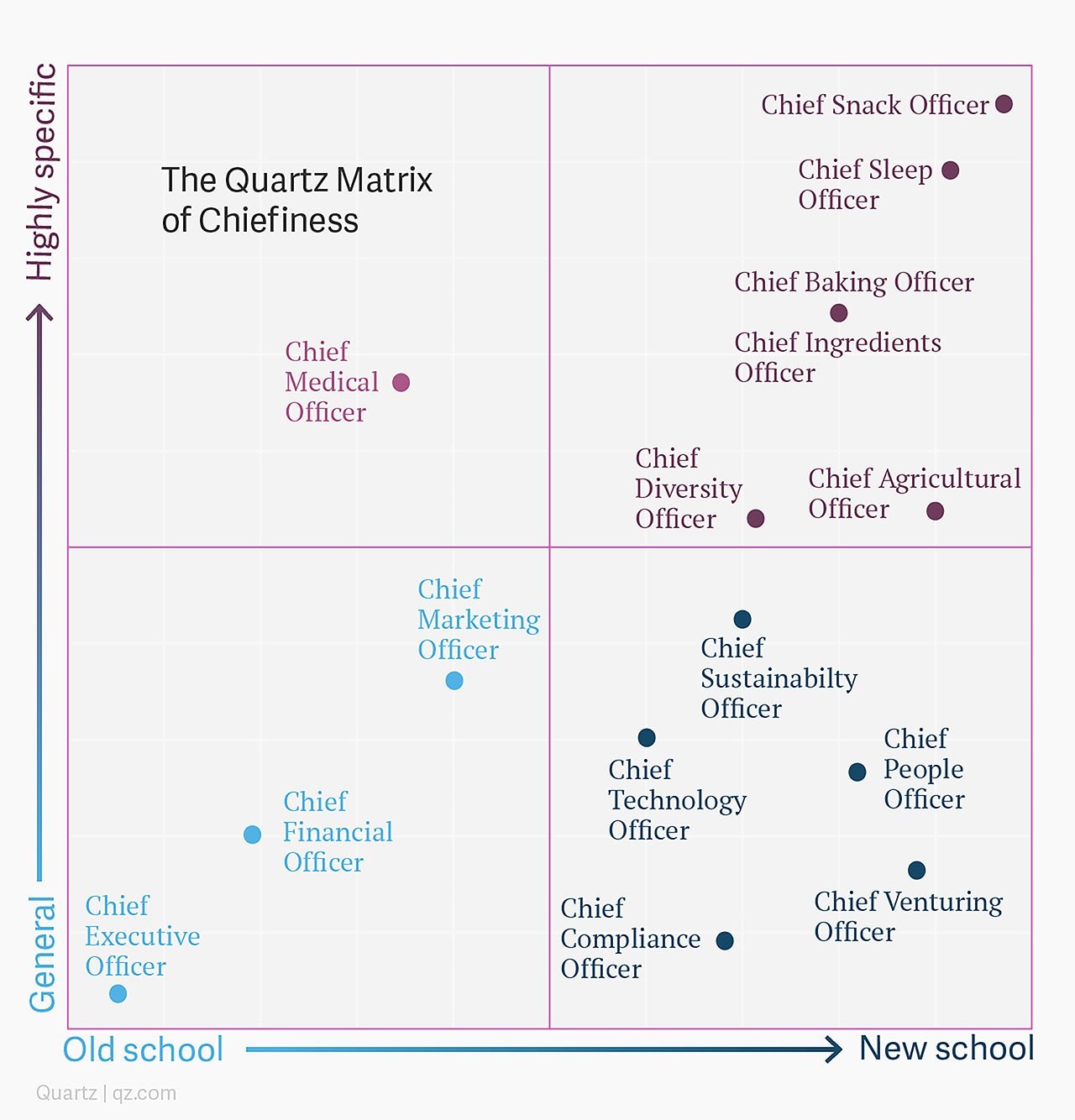Just how ridiculous is a “chief fun officer?” Let the Quartz Matrix of Chiefiness be your guide
First came chief executive officers. Then, chief finance officers. Those were followed by chief operating officers, chief marketing officers, and chief technology officers.


First came chief executive officers. Then, chief finance officers. Those were followed by chief operating officers, chief marketing officers, and chief technology officers.
Almost any high-level corporate executive can be a chief of something now: There are chief risk officers, chief strategy officers, chief medical officers, and chief compliance officers. Chief human-resources officers turned into chief people officers, who are now sometimes chief happiness officers. Who are not to be confused with chief fun officers.

Corporations used to be run by presidents. Chief executive officer, as a formal title, didn’t appear among large US companies until the 1950s, when it was adopted by the Container Corporation of America, according to sociology researchers at the University of Michigan (pdf). The title spread quickly, and by the late 1970s, almost all of the largest 200 companies were using the title. There were no obvious business justifications to changing the title of president; the researchers conclude it was simply a fad. Once the heads of the biggest companies became CEOs, every other president wanted an upgrade, too.
Calling the head of a company a chief executive officer, at least, is defensible in an era where corporations have multiple units with their own presidents. In a sprawling corporation with many divisions, it may make sense to have chief technology or chief risk officers who can pull together all the company’s needs into a coherent strategy.
But often the titles make little sense, assigning “chief” to roles that are either subordinate, or should belong to the CEO. A number of video game companies now have chief gaming officers. But if the product is video games, shouldn’t the CEO be the chief gaming officer? The title, at least, shifts accountability from where it belongs. As we once said, no one should have the word “strategy” if everyone should be thinking about strategy.
As chiefs proliferate, the title has become less a position of authority, and more a reflection of a company’s current culture. To stress its pizzas are made with fresh ingredients, Papa John’s promoted a senior vice president to chief ingredient officer. Mars, the candy and food company, is making a push toward sustainability, so it named a chief agricultural officer. To signal their commitment to hiring women and minority, an increasing number of companies now have chief diversity officers.
The title is less irksome when it’s tongue-in-cheek. A pillow maker has a chief sleep officer. A cupcake company has a run by a chief baking officer. And is if to demonstrate how anyone can be a chief officer these days, at Whistle, which make a device to track pets, the chief snack officer is a dog named Duke.
This Quartz story originally appeared on qz.com on July 13, 2017.